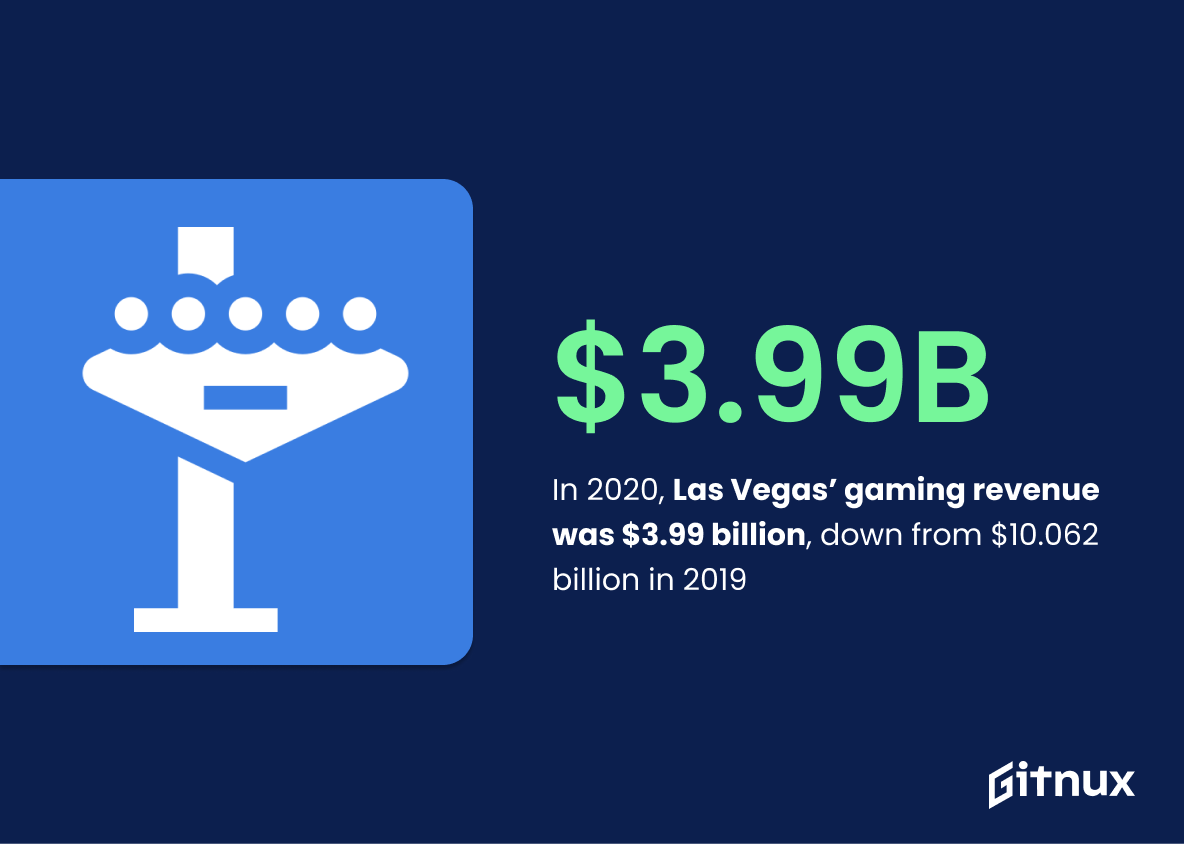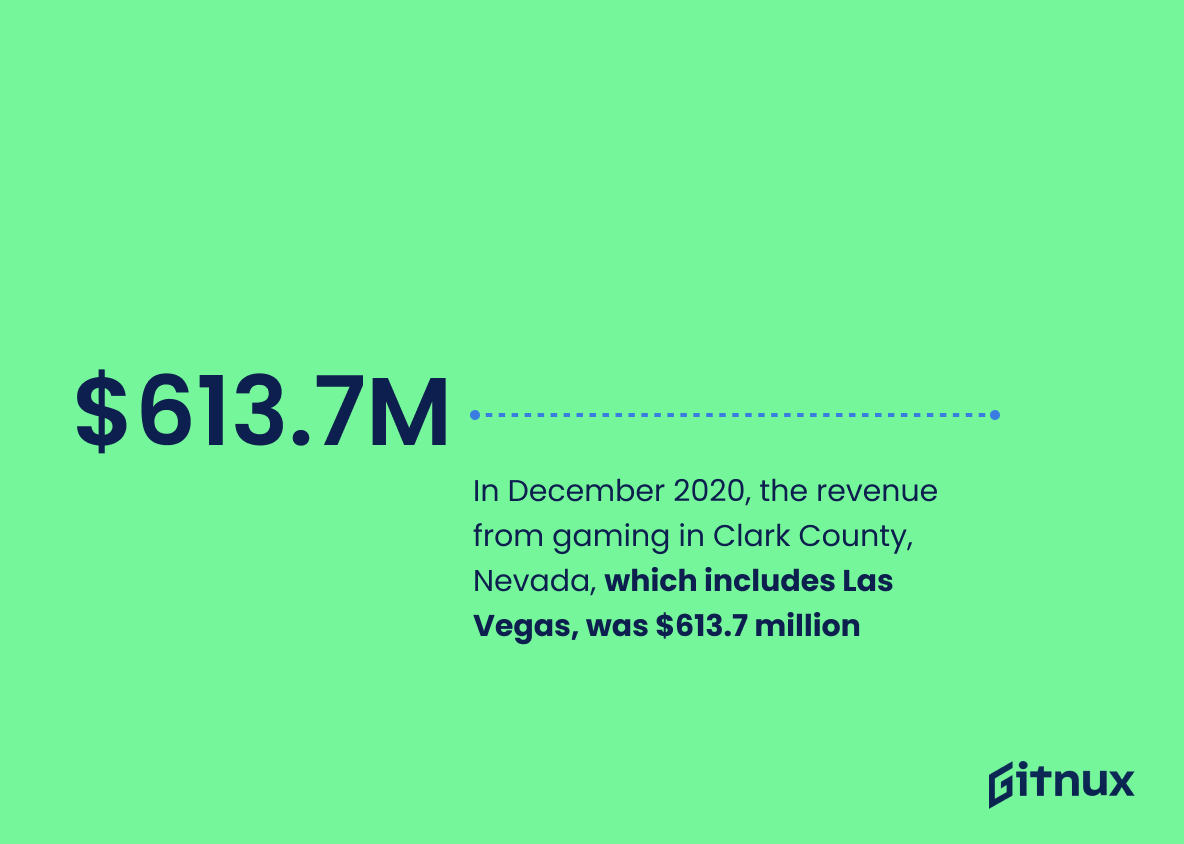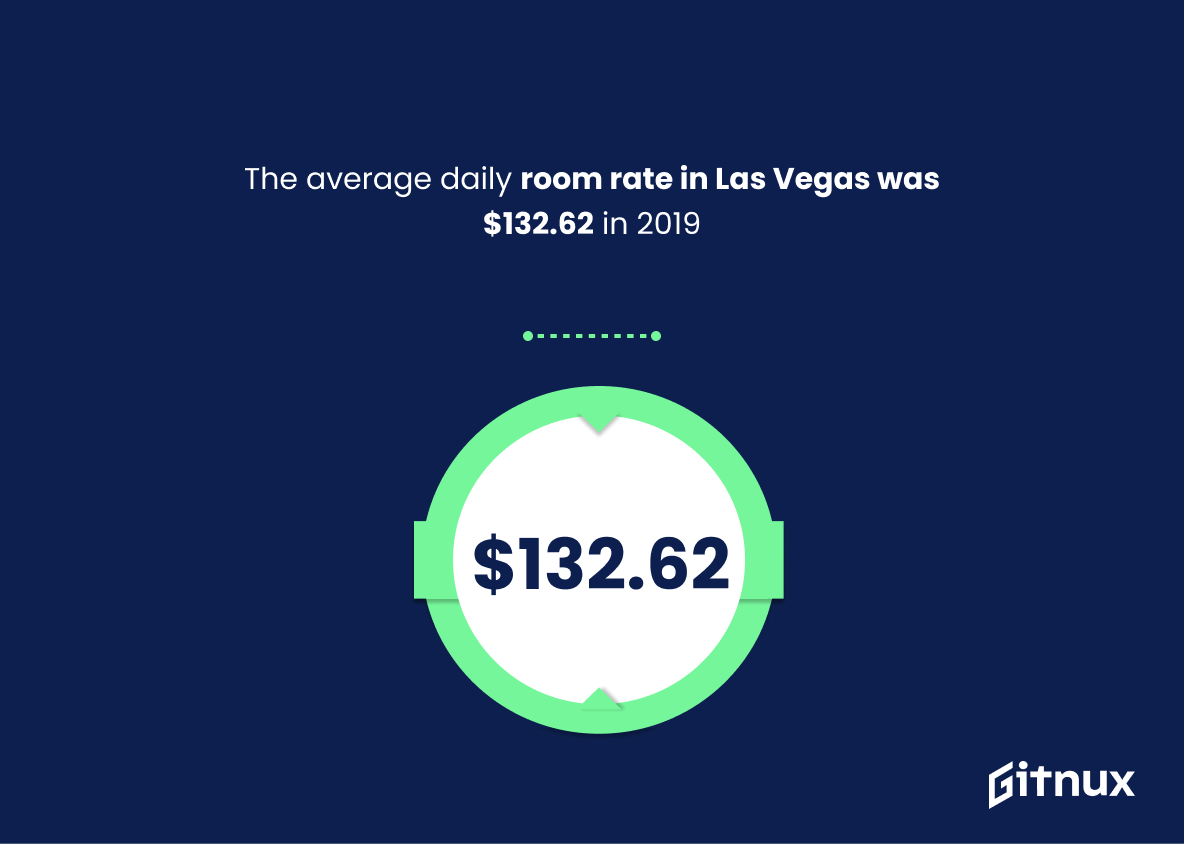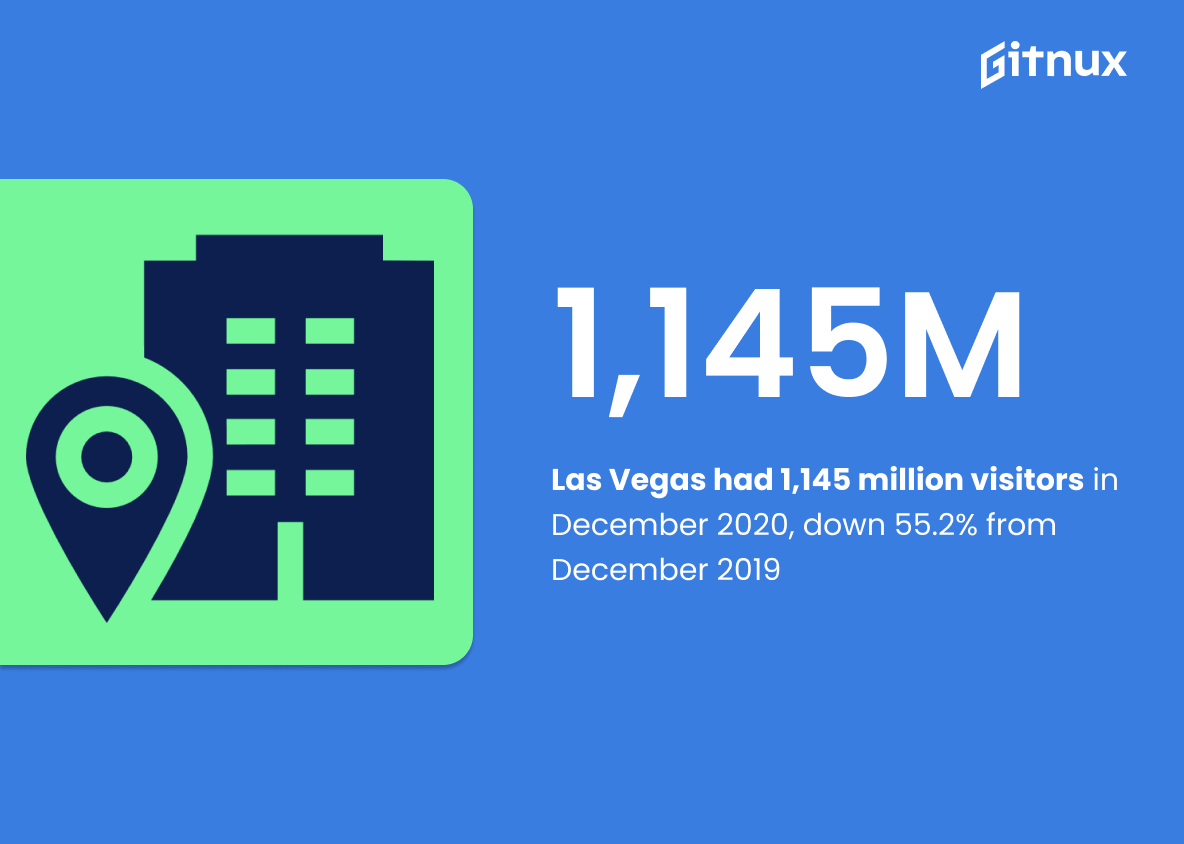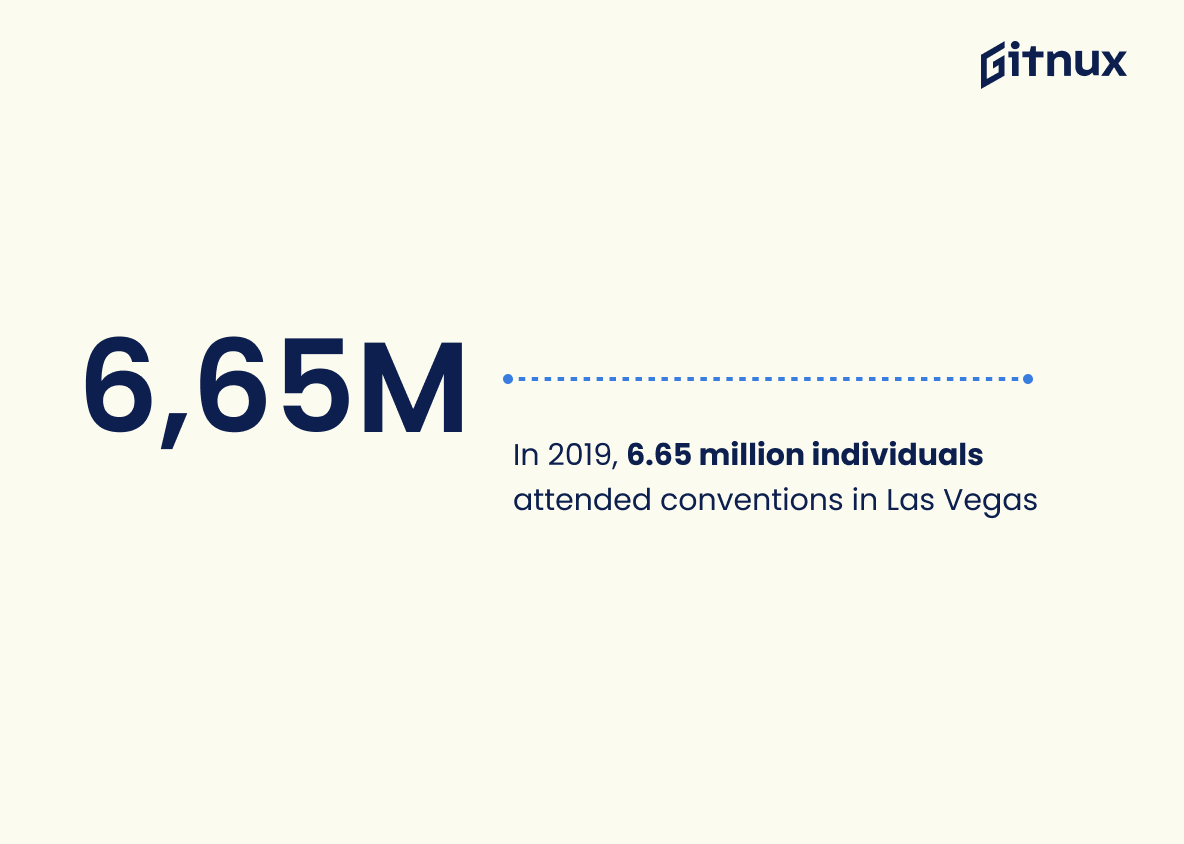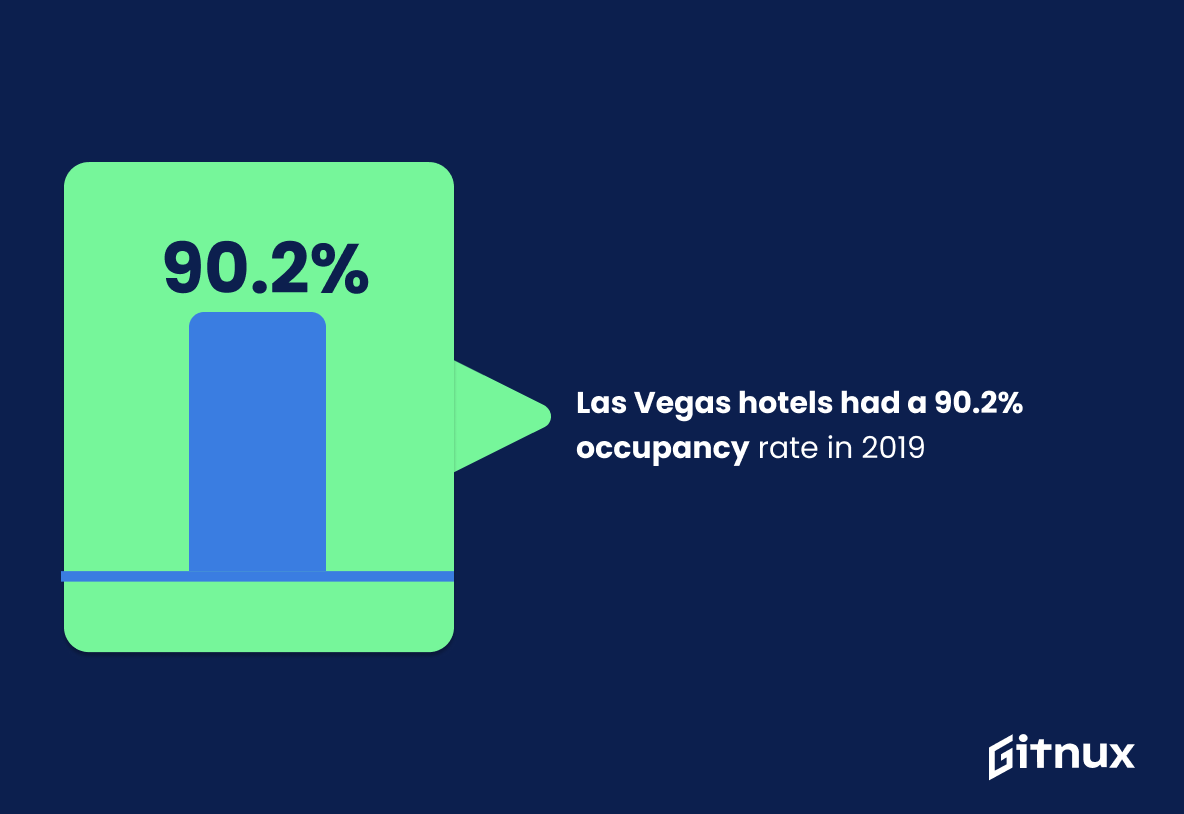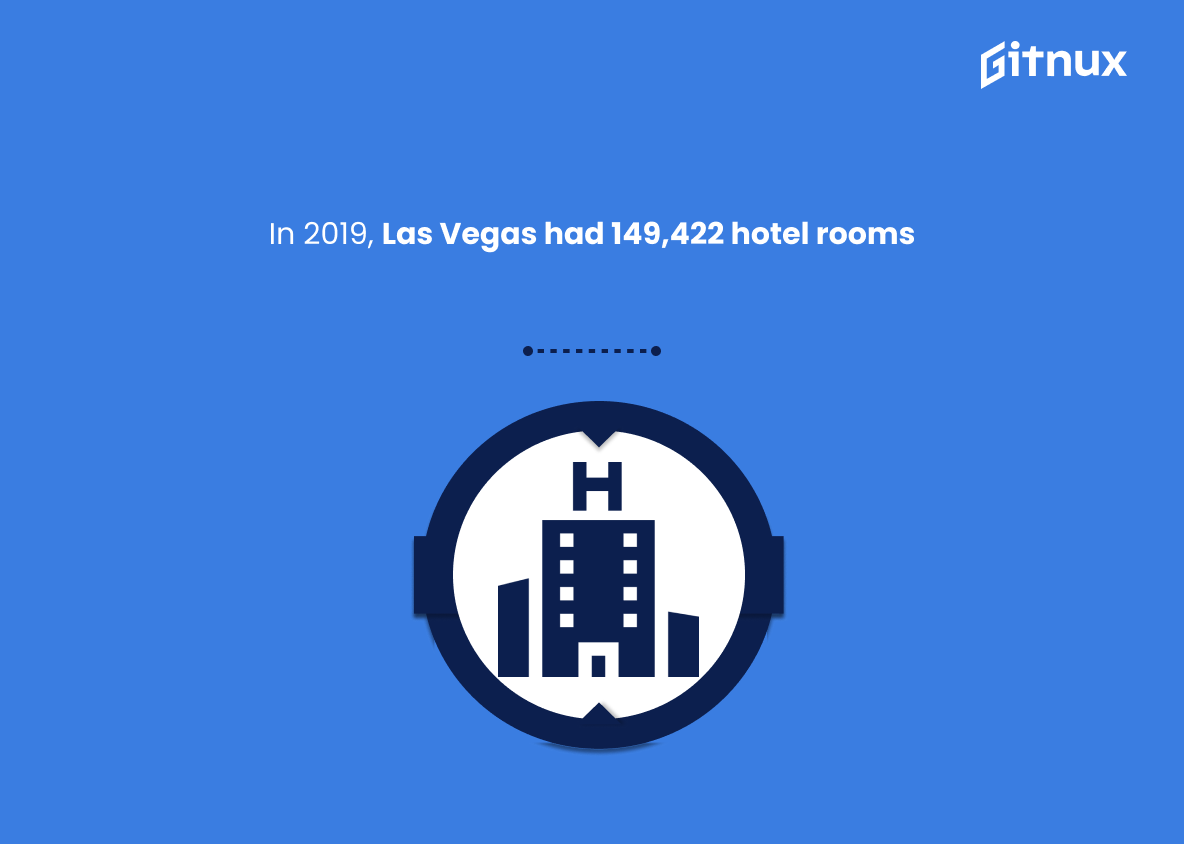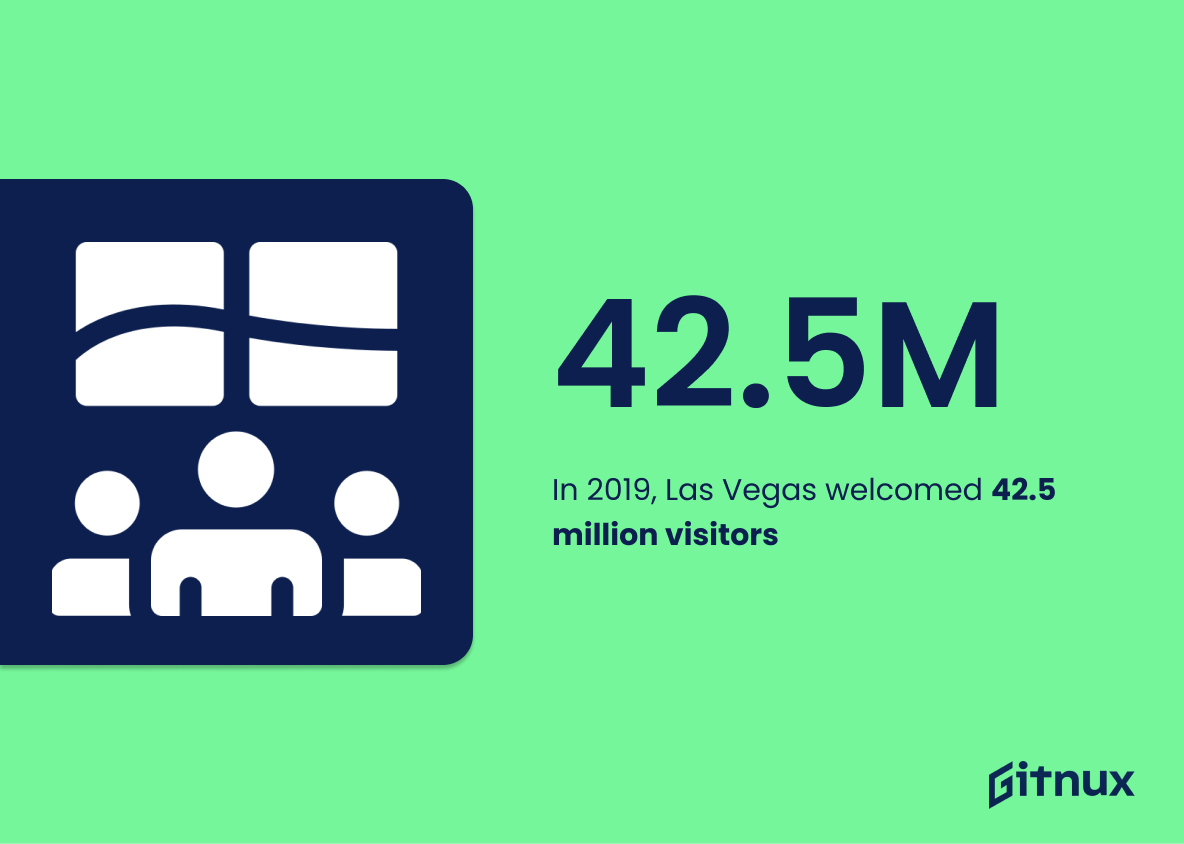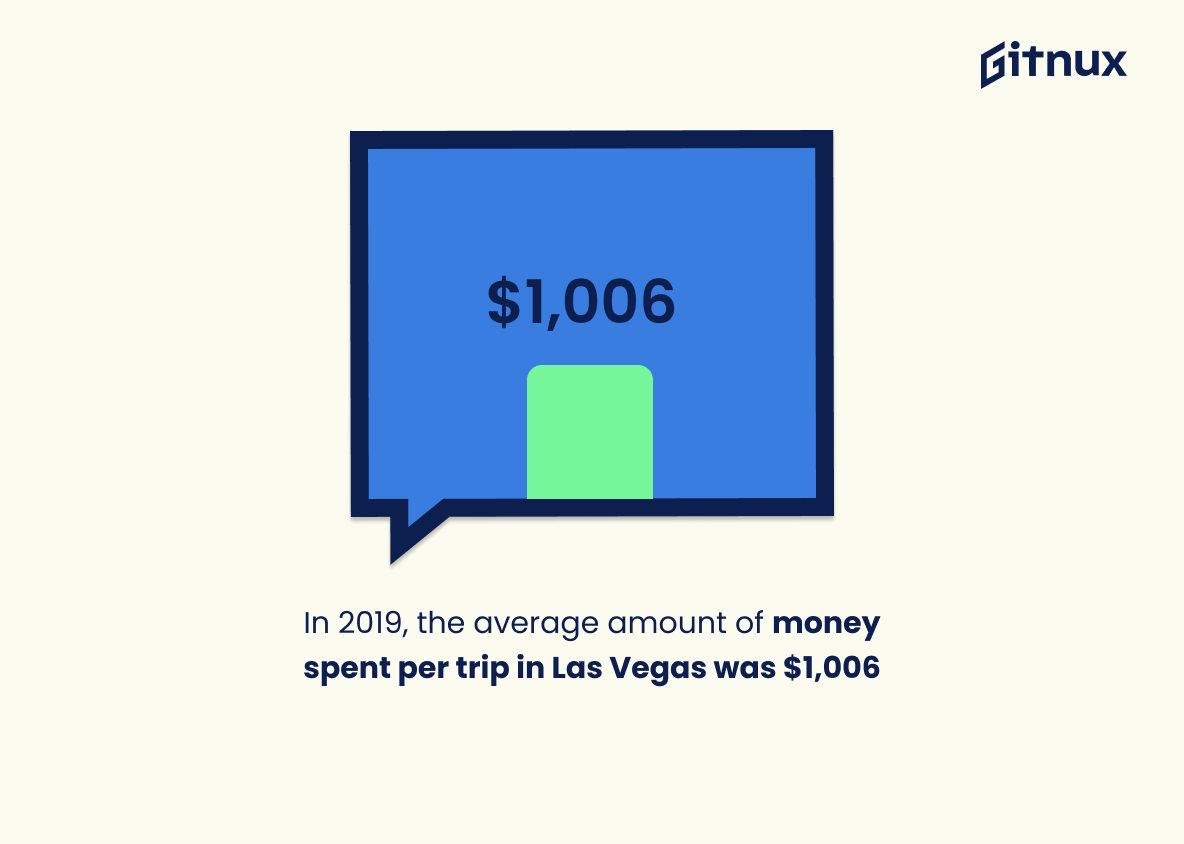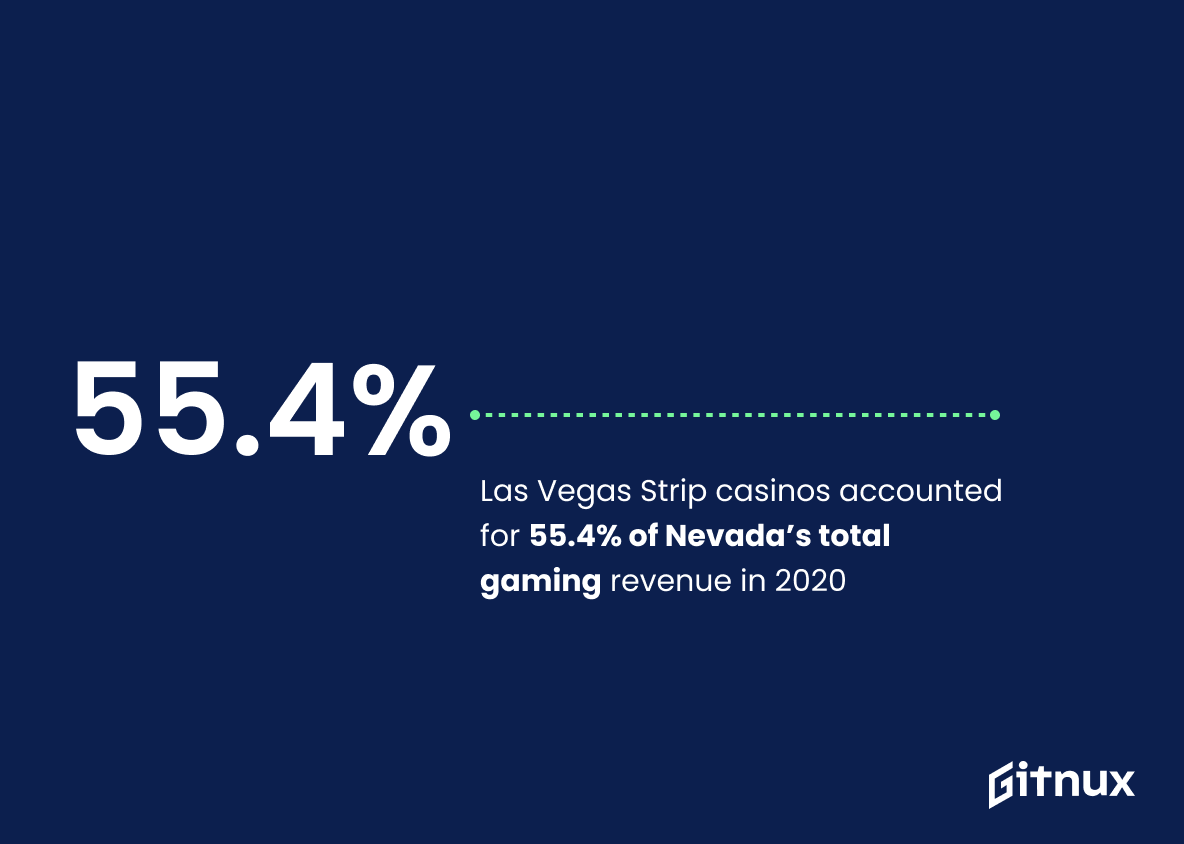Las Vegas is one of the most popular tourist destinations in the world, and its gaming industry plays a major role in driving economic growth. In this blog post, we will be exploring Las Vegas’ revenue statistics from 2019 to 2020. We’ll look at total gaming revenue generated by Las Vegas Strip casinos, as well as non-gaming revenues such as conventions and hotel occupancy rates. Additionally, we’ll examine how Clark County’s overall gaming revenue was affected by COVID-19 restrictions last year. Finally, we’ll discuss some other interesting facts about Las Vegas that are related to these numbers. So let’s dive into it.
This statistic is a testament to the immense success of Las Vegas Strip casinos in 2019. It highlights the sheer amount of money that was generated in gaming revenue, demonstrating the Strip’s ability to draw in large numbers of visitors and generate significant profits. This statistic is an important indicator of the Strip’s economic health and provides insight into the overall success of the Las Vegas economy.
Las Vegas Strip casinos reported a 39.4% decrease in gaming revenue in 2020, compared to 2019.
This statistic is a stark reminder of the impact the pandemic has had on Las Vegas Strip casinos. The 39.4% decrease in gaming revenue in 2020 compared to 2019 is a significant drop that has had a major effect on the city’s economy. It serves as a reminder of the importance of taking the necessary precautions to protect public health and safety.
Las Vegas Revenue Statistics Overview
In 2020, Las Vegas’ gaming revenue was $3.99 billion, down from $10.062 billion in 2019.
This statistic is a stark reminder of the impact the COVID-19 pandemic has had on Las Vegas’ gaming revenue. It shows a dramatic decrease of over $6 billion from 2019 to 2020, highlighting the devastating effects of the pandemic on the city’s economy.
The Las Vegas Convention and Visitors Authority reported that conventions generated $11.4 billion in economic impact in 2019.
This statistic is a testament to the immense economic power of Las Vegas. It demonstrates that conventions are a major source of revenue for the city, contributing a staggering $11.4 billion in 2019 alone. This figure is a clear indication of the city’s ability to attract and host large-scale events, and highlights the importance of conventions to the Las Vegas economy.
In December 2020, the revenue from gaming in Clark County, Nevada, which includes Las Vegas, was $613.7 million.
The December 2020 revenue from gaming in Clark County, Nevada, which includes Las Vegas, was an impressive $613.7 million. This figure is a testament to the strength of the Las Vegas economy and its ability to generate significant revenue from gaming. It also serves as a reminder of the importance of the gaming industry to the local economy and the potential for further growth in the future.
Las Vegas Strip’s gaming revenue dropped 27.1% year-over-year to $2.3 billion during the first half of 2020.
This statistic paints a stark picture of the impact of the COVID-19 pandemic on Las Vegas Strip’s gaming revenue. It is a clear indication that the city’s economy has been significantly affected by the pandemic, with a 27.1% drop in revenue compared to the same period in 2019. This is a worrying trend that could have long-term implications for the city’s economy and its residents.
The average daily room rate in Las Vegas was $132.62 in 2019.
This statistic is a key indicator of the success of Las Vegas’ hospitality industry. It reveals the average amount of money that visitors are willing to pay for a night’s stay in the city, providing insight into the overall health of the tourism sector. By understanding the average daily room rate, businesses can better plan their budgets and adjust their strategies to maximize their profits. Additionally, this statistic can be used to compare the performance of Las Vegas’ hospitality industry to other cities, giving a better understanding of the city’s competitive position in the market.
Las Vegas’ visitor count was down 55.2% in December 2020 compared to December 2019, with 1.145 million visitors.
This statistic is a telling indication of the impact the COVID-19 pandemic has had on Las Vegas’ tourism industry. With a 55.2% decrease in visitors compared to the same month the previous year, it is clear that the city has been hit hard by the pandemic. This statistic is an important piece of the puzzle when it comes to understanding the overall revenue statistics of Las Vegas.
The Las Vegas food and beverage industry reported $14.1 billion in sales in 2019.
This statistic is a testament to the immense success of the Las Vegas food and beverage industry in 2019. It highlights the sheer magnitude of the industry’s contribution to the city’s overall revenue, demonstrating the importance of the sector to the Las Vegas economy.
In 2019, 6.65 million individuals attended conventions in Las Vegas.
This statistic is a testament to the success of Las Vegas as a convention destination. It shows that the city is a popular choice for large-scale events, and that it is capable of accommodating a large number of attendees. This is an important factor in the overall revenue of the city, as conventions bring in a significant amount of money from hotel stays, food and beverage purchases, and other services.
Las Vegas hotels had a 90.2% occupancy rate in 2019.
The high occupancy rate of Las Vegas hotels in 2019 is indicative of the city’s success in attracting visitors and generating revenue. This is an important statistic to consider when discussing Las Vegas revenue statistics, as it shows that the city is a popular destination and is able to draw in a large number of tourists.
In 2019, Las Vegas had 149,422 hotel rooms.
The sheer number of hotel rooms in Las Vegas speaks volumes about the city’s popularity and potential for revenue. With such a large number of rooms, Las Vegas is able to accommodate a vast number of visitors, allowing it to capitalize on the tourism industry and generate significant revenue.
In 2019, Las Vegas welcomed 42.5 million visitors.
This statistic is a testament to the immense popularity of Las Vegas as a tourist destination. It demonstrates the sheer number of people who flock to the city each year, and the potential for revenue that this brings. It is an important factor to consider when discussing Las Vegas revenue statistics, as it provides insight into the potential for growth and success.
In 2019, the average amount of money spent per trip in Las Vegas was $1,006.
This statistic is a telling indication of the success of Las Vegas as a tourist destination. It shows that people are willing to spend a significant amount of money on their trips to the city, which is a testament to the attractions and experiences that Las Vegas has to offer. This statistic is an important part of understanding the overall revenue of Las Vegas and the impact it has on the local economy.
Las Vegas Strip casinos accounted for 55.4% of Nevada’s total gaming revenue in 2020.
This statistic is a testament to the immense economic power of the Las Vegas Strip casinos. It highlights the fact that the Strip casinos are the driving force behind Nevada’s gaming revenue, accounting for more than half of the total revenue generated in the state. This is an impressive feat, and it speaks to the success of the Las Vegas Strip casinos in providing a unique and exciting experience for visitors.
Conclusion
Las Vegas is a major tourist destination and its gaming industry plays an important role in the city’s economy. The statistics presented show that Las Vegas Strip casinos generated $6.588 billion in gaming revenue in 2019, but this number decreased significantly to $3.99 billion by 2020 due to the pandemic-related restrictions imposed on travel and tourism activities worldwide. In addition, non-gaming revenues such as conventions, food & beverage sales, hotel occupancy rates also saw significant declines during this period of time. Despite these losses however, Clark County still reported total gaming revenue of over $613 million for December 2020 alone which shows that there is potential for recovery once conditions improve globally and people are able to safely visit Las Vegas again without fear of contracting COVID-19 or other illnesses associated with it.
References
0. – https://www.statista.com
1. – https://www.yogonet.com
2. – https://www.technomic.com
3. – https://www.reviewjournal.com
4. – https://www.lvcva.com
5. – https://www.lvcva.com
